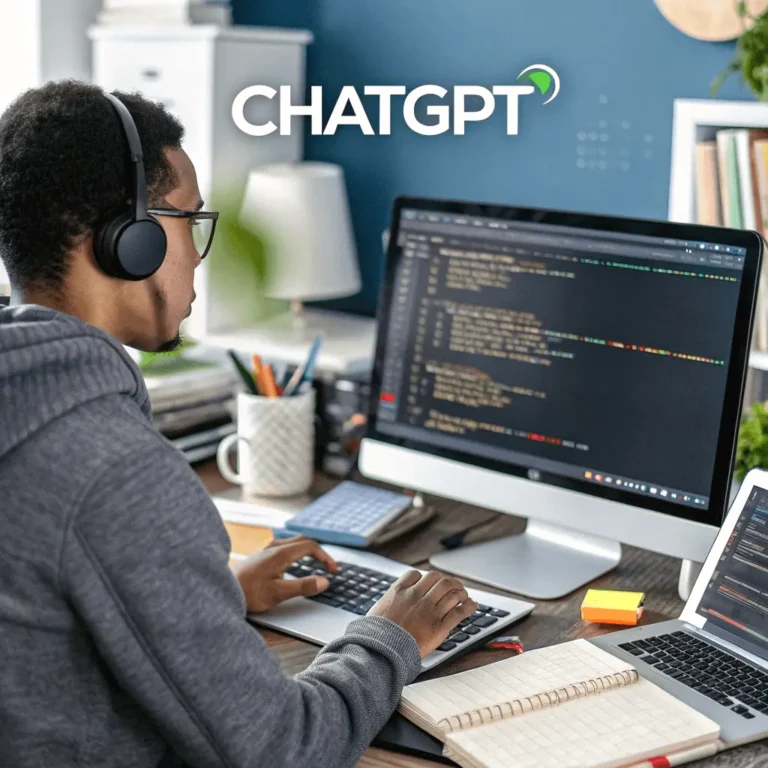
In the Software Development Life Cycle (SDLC), software testing plays a vital role in ensuring the quality and reliability of applications. Testing can be manual, requiring human effort, or automated, performed using AI testing tools and platforms. These tools help automate repetitive tasks, improve test coverage, and speed up the testing process.
With the growing number of AI testing tools available in 2025, selecting the right one for your project can be challenging.
Let’s explore some of the top AI testing tools every QA engineer should know.
Why Do You Need AI Testing Tools?
Let’s start with the why. What is driving the need for AI testing tools?
Keeping up with testing demands can feel like an endless struggle. That’s exactly where AI testing tools step in. But simply having AI features is not enough. What you need is a tool that adds real value to your testing process. With the right AI testing solution, you can achieve the following:
Automate Requirements, Test Cases, and Data Creation
AI can read short prompts or simple descriptions and generate requirements from them. From those requirements, you can instantly generate test cases, saving significant time during the planning stage. You can also prepare test data within seconds using AI.
Execute Test Automation
AI can observe how testers work and turn those actions into automated flows. This cuts down on repetitive setup tasks. It can also produce scripts automatically, removing the need for manual coding in many scenarios. When applications change, AI can repair scripts on its own to prevent breakdowns. Beyond that, it adapts to new workflows and connects with other testing tools, keeping your testing cycle smooth and fast.
Detect and Manage Flaky Tests
AI can study test histories and find patterns that indicate instability. It can then place stable tests at the top of the queue, so unreliable ones don’t waste your team’s time with false alarms.
Optimise Test Runs Dynamically
AI tools can study recent code changes and highlight the areas most likely to break. By doing so, they adjust which tests to run first, cutting down time and aligning effort with areas that matter most.
Spot Recurring Error Trends
By scanning past data, AI can recognise repeating errors and point toward possible root causes. This reduces the time spent manually searching for issues.
Use Natural Language for Reporting
AI tools can change test logs into plain language summaries that show the most important problems. These summaries can also suggest next steps, which makes defect reporting faster and easier to understand.
What Are the Benefits of AI Testing Tools?
Let’s walk through the main advantages.
- Growth That Matches Your Needs: AI testing tools adapt as your projects expand. When workloads increase, they can handle the extra demand without putting additional strain on your team. Whether you are a small group or a large organisation, these tools adjust to your pace.
- Learning From Every Cycle: AI tools study outcomes from each test run and get smarter with time. This means your testing process becomes sharper with every cycle, producing results that are more accurate and valuable.
- Moving Beyond Manual Limits: Manual testing often slows down projects and carries the risk of errors. AI tools take over repetitive tasks and process large sets of data at once. This removes bottlenecks and gives you space to focus on complex issues that require your judgement.
- Stronger Test Coverage: AI-driven testing increases coverage across different scenarios and environments. This makes it possible to find more issues at an earlier stage. The result is better product quality and smoother experiences for users.
Selection Criteria for AI Testing Tools
Choosing AI testing tools should be guided by factors that ensure the tool meets project needs and delivers long-term value. Here are key points to consider when selecting the right tool.
- Innovation and Use of AI: Focus on the tool’s ability to apply advanced AI technologies. This helps your team improve testing effectiveness and quality using the chosen tool.
- Ease of Integration and Use: Select tools that integrate smoothly with your existing development environment. Consult with the QA team to ensure adoption is simple and practical.
- Scalability and Support for Test Types: Check that the tool can grow with your project so you do not need to switch later. Also, confirm compatibility with multiple test types, including automation and unit tests.
- Cost-Effectiveness and ROI: Evaluate whether the tool’s cost aligns with the value it provides. Find a balance between investment and benefits for your project.
- Reputation and User Reviews: Review feedback from past users to eliminate options that may not deliver as promised. Customer experiences can guide you to the most reliable choices.
Top AI Testing Tools Every QA Engineer Should Know in 2025
LambdaTest KaneAI
LambdaTest KaneAI is a GenAI-based testing agent that helps teams plan, generate, and refine test cases directly through natural language. Removing the complexity of scripting makes test creation faster and encourages collaboration between both technical and non-technical team members.
Key Features
- Plain English Test Generation: Builds automated test cases from scenario descriptions.
- Natural Language Validation: Checks test conditions for quicker logic creation.
- Smart Versioning: Keeps multiple versions to track test changes.
- Integration Tags: Works with Slack, JIRA, GitHub, and Google Sheets through KaneAI tags.
Diffy
Diffy is a simple and lightweight visual regression testing tool. It is cloud-based and can test visual changes across many environments, including staging and production. Diffy creates a visual diff by comparing screenshots from different environments so that changes are found early.
Key Features
- Highlights differences between before-and-after screenshots.
- Minimizes false positives by ignoring dynamic content changes.
- Notifies teams about unexpected visual alterations.
- Offers automatic configuration suggestions and Loom recordings for UI verification.
DeepExploit
DeepExploit is an AI testing tool that uses reinforcement learning to automate penetration testing. It scans target servers to identify open ports and executes precise exploits based on the findings.
The tool continuously improves its exploitation techniques through deep reinforcement learning, adapting strategies dynamically with each scan.
Key Features
- Refines exploitation strategies over time through reinforcement learning.
- Extends exploit capabilities by working with the Metasploit framework.
- Handles vulnerability scanning, exploitation, and result analysis without manual input.
- Chooses and launches the most effective exploits using learned patterns.
Botium Core
Botium is a popular AI testing framework for chatbot testing. Its no-code method makes it easy for both technical and non-technical users. It is used for functional testing, performance checks, and security testing, including GDPR compliance.
Key Features
- Defines chatbot test cases to map conversational flows.
- Supports plain text, Excel, CSV, JSON, and YAML for test definitions.
- Works with more than 55 conversational AI and NLP platforms.
- Runs automated chatbot tests as part of development pipelines.
- Includes a command-line tool for executing and managing tests.
DeepAPI
DeepAPI is an AI testing tool developed by OpenAI. It monitors how your APIs work and points out anything unusual. It uses AI to learn what normal behavior looks like and gives an alert when something is not right, such as a slow response or an unexpected output. It comes in two versions: Theano and PyTorch.
The Theano version includes code to execute tests, while the PyTorch repository extends functionality with extra features.
Key Features
- Uses machine learning algorithms to track API performance in real time.
- Works with both REST and GraphQL API products.
- Displays anomalies in a clear format for easier interpretation.
- Let users adjust test generation and algorithms based on project needs.
SikuliX
SikuliX is an open-source AI testing tool for UI automation. It is useful for testing desktop apps and games. It uses image recognition to find and click elements on the screen. It is helpful when the app does not work well with traditional testing tools.
Key Features
- Works with RPA frameworks, RPM, and Selenium.
- Reads and interacts dynamically with on-screen text.
- Supports Java and Python scripting.
- Compatible with Linux, Windows, and Mac OS.
Atheris
Atheris is a fuzzing tool for Python. It creates random inputs to test edge cases and find unusual bugs. AI helps it learn which parts of the code are not well tested.
Key Features
- Uses intelligent input mutations to explore code paths.
- Adjusts test inputs based on program execution.
- Works with C/C++ extensions and pure Python.
- Developed and maintained by Google for reliability.
Momentic
Momentic is an AI testing platform that unifies regression testing, UI automation, and production monitoring into a single intuitive environment. It is easy to set up, maintain, and accelerate QA and development cycles with its low-code interface and automated test updates.
Key Features
- Generates logical and visual checks using natural language.
- Detects elements automatically without relying on XPath.
- Builds and debugs tests with real-time updates and logs.
- Automatically adapts to changes and resolves flaky tests.
Leapwork
Leapwork is a no-code test automation platform with AI features that lets users create reusable visual flow diagrams. It supports testing on web, desktop, mobile, Citrix, and mainframe interfaces. The platform simplifies test creation for both business and technical teams, providing dynamic regression updates, hypervisual debugging, and compliance-ready audit trails.
Features
- Build tests using drag-and-drop components without coding.
- Adaptive test elements and dynamic object recognition improve accuracy.
- Maintains audit trails, role-based access, and compliance support.
- Supports automation across web, desktop, mobile, SAP, AI, and Citrix apps.
- Use templates to reduce repetitive work and simplify maintenance.
How To Choose the Right AI Testing Tool
When adding AI technologies to your testing processes, it is important to choose tools that match your platform and business requirements.
Start by analyzing your AI software testing needs, such as support for functional, regression, performance, or other types of testing. Review current workflows, including CI/CD pipelines, testing environments, and existing DevOps tools.
To get the most from AI tools, check if your team has the right skills to use them well. Finally, look at the cost and see if the investment gives real value.
Conclusion
AI testing tools are a crucial part of modern software development as they help ensure the accurate functioning and performance of applications. Choosing the right AI testing tool allows QA engineers to detect issues early, optimize testing efforts, and accelerate software releases. This article covers the top AI testing tools every QA engineer should know in 2025, which can be selected based on project requirements and team needs.
Explore these tools individually and consider the features and benefits discussed in this article before making a decision. If your focus is on visual or interactive testing, don’t miss exploring KaneAI which specialise in UI validation and natural language-driven test creation.



